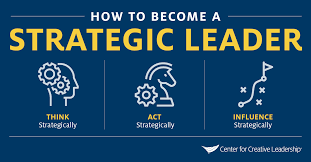
I DO diagnostics or needs assessment everytime I conduct training sessions at organisations.This serves to identify needs or gaps between the company’s current plan and the desired outcome.
As I assess the companies my general questions are: Why do you exist (purpose)? Where do you want to go (projections or plans)? How do you intend to get there (action plans)? What do you need to get there (resources)? How will you know you have arrived (targets/smart goals)?
In addition, the other question I ask is: When were you last trained as a company? In most instances, this leads to silence and a bit of discomfort. When the answer comes it is usually, “We last trained our staff in 2014” (just as an example).
A lot has changed in the past decade. For SMEs, they might even say we have never trained our employees. This alone is a problem, hence as we start 2024, I have been hammering on the importance of training and today we focus on the importance of training on strategy and leadership. Let us start with a question: When was the last time your company had a training session to empower leaders and employees?
Strategic alignmentTraining in strategy ensures that all workers understand the company's overall goals and how their roles contribute to the broader objectives. This fosters alignment throughout the organisation.
Informed decision-makingIdeas create, keep and control a company. A company without new ideas will fade away. So, a well-trained leadership team can make informed and effective decisions, considering long-term consequences and opportunities. This is crucial for the success and growth of a company.
AdaptabilityChange is permanent. I am saying so because change will always come, whether you like it or not. The best way is not to oppose change but be well equipped to face it.Strategy and leadership training equip individuals with the skills to adapt to changing market conditions, technological advancements, and economic shifts, ensuring the company remains resilient in dynamic environments.
Employee engagementCorporate culture is created by internal communications. Leaders trained in effective communication and motivational techniques can create a positive work culture, leading to higher employee engagement and productivity.
- As Covid-19 persists, workplace trends to continue shifting in 2022
- As Covid-19 persists, workplace trends to continue shifting in 2022
- How boardroom dynamics shape corporate culture
- 14 Cs of team effectiveness
Keep Reading
I will recommend leaders to read the book by Reed Hastings and Erin Meyer titled No Rules Rules. Additionally, leaders must be trained on emotional intelligence, which gives them a skill to deal with different personalities.
Innovation and creativityWhen you stay competitive, you stay as a market leader. Strategic training encourages a culture of innovation and creativity, enabling companies to stay competitive by continuously improving products, services and processes. Innovativeness is also boosted by learning as emphasised by Peter Senge in his book The 5th Discipline.
Risk managementTraining and empowering leaders and employees make us better prepared for risks.Leaders trained in strategy are better equipped to identify and mitigate risks, making the organisation more resilient in the face of uncertainties.
Resource optimisationThe most important thing a company has are its resources. These resources include but are not limited to human resources, finances and assets (equipment).Effective strategic planning helps in the optimal allocation of resources, ensuring that time, money and manpower are utilised efficiently to achieve organisational goals.
Competitive advantagePeter Drucker once said we live in an “era of 3Cs— accelerated change, overwhelming complexity and tremendous completion” and this demands that a company stays competitive.Companies with well-trained leaders can identify and leverage their strengths, gaining a competitive edge in the market and staying ahead of industry trends.
Customer excellenceA company without customers has no business. A company must be constantly making new customers and retaining the old ones.Strategy and leadership training emphasise the importance of understanding customer needs, leading to the development of customer-centric approaches and enhanced customer satisfaction.
Parting pointAllow me to end with a question I started with: When was the last time your company had a training session to empower employees? Organisational growth and learning is crucial and that can be achieved through training. A strong focus on strategy and leadership development fosters a culture of continuous improvement, which is essential for sustained organisational growth and success.







